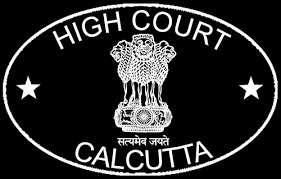Sinha, J.@mdashThe petitioners as trustees are owners of municipal premises No. 84A, Lower Chitpur Road. Calcutta. The respondents Nos. 6 to 27 are monthly tenants and / or occupiers of specific portions or rooms in the said premises. The said premises consists of three blocks. The front or roadside block is a three-storied structure. The back block was also a three-storied structure and the privy block on the South was a two-storied structure. It is an ancient and dilapidated building, more than one hundred years old, and is in a dangerous condition. On or about 21st January, 1957 the Commissioner, Corporation of Calcutta, on the report of the city architect, directed the demolition of the insecure portions of the said premises under the provisions of Schedule XVII, Rule 5(4) of the Calcutta Municipal Act 1951. Notice was also issued under Rule 5(1) of Schedule XVII upon the petitioners, to secure and repair the rest of the building. Thereupon, three of the tenants in the front block made an application to this court and rules were issued, numbered as Matter No. 15 of 1957, Matter No. 16 of 1957 and Matter No. 40 of 1957. The demolition proceedings were stayed. The first two rules were proceeded with and were discharged on the 10th April, 1957 and the stay orders vacated. The third rule which was issued on the 7th March, 1957 was heard and discharged on the 29th May, 1957. Thereafter, the Corporation carried out the demolition of portions of the said premises. Amongst other portions, the stair cases were demolished. With regard to the remaining portions of the said premises, which in the view of the petitioners are in an alarming and dangerous condition, the Corporation, not having taken any steps for demolition, the petitioners made an application to this Court under Art. 226 and a rule was issued inter alia upon the Corporation to show cause why a writ in the nature of mandamus should not be issued directing it to take appropriate steps for the demolition of the remaining portions of the said premises, and for removal of the occupiers and tenants therefrom, in order to effect such demolition. In course of the said case, the city architect Sri Priya Guha was asked to inspect the premises again and make a report. He affirmed an affidavit dated 13th March, 1958 and in that affidavit stated that the entire building, both in the front and in the rear, had outlived its period of useful existence and repairs will not help unless the repairs are in the nature of virtually a complete reconstruction, which was, therefore, not an economic proposition. On the 20th March, 1958 I disposed of the said rule and in my judgment stated that if the city architect was himself of the opinion that the premises could not be repaired I did not see how the Commissioner could reasonably call upon the owner to cause repairs, and the proper thing would be an order of demolition to enable the owner to re-build the said premises. The operative portion of my order was as follows :-
The matter will go back the Commissioner who will reconsider the matter in view of the affidavit now filed by Sri Priyo Guha, the city architect and then deal with the matter according to law. He will not be precluded then from issuing fresh notice upon the occupiers under Rule 5(1). But the petitioners in that case will have liberty to make an application in this court if they are so advised.
The idea behind the order was this: The whole building was an ancient building and in an extremely dilapidated condition. With regard to one part, it was in a ghastly condition and this had been already demolished. With regard to the other portions, the Commissioner had called upon the owners to repair, but according to the owners, repair was impossible and an uneconomic proposition, because it meant virtually building a house anew. I, therefore, asked the City Architect to inspect the premises and report. He inspected the premises and put his opinion in an affidavit. That affidavit clearly shows that the remaining portion of the premises should also be demolished and that it was meaningless to call for its repair. I, therefore, sent it back to the Commissioner to deal with the matter after consideration of the view expressed by the city Architect himself. After the matter went back, the City Architect was consulted by the Commissioner, who also consulted his legal advisers and on the 16th July, 1958 notice was issued upon the owners under Rule 5(1) of Schedule XVII of the said Act to demolish the entire building, as it was lying in a dangerous condition. Notice was also issued under Rule 5(2) of Schedule XVII of the said Act upon the tenants and occupiers of the said premises to vacate the same. The tenants and occupiers, including some of the respondents, thereupon preferred objections before the Standing Building Committee u/s 5(61) of the said Act. The matter came up before the Standing Building Committee on the 20th March, 1959. A copy of the minutes of the said meeting has been placed before me and I direct that it should be marked as an exhibit. After a prolonged discussion it was resolved that the case should be sent to the Municipal Magistrate''s Court. It is thus rather a peculiar decision which has caused all the trouble in this case. The question is as to whether this meant that the appeal was rejected. Having read the minutes of the proceedings, I have no doubt that it was so. Section 560 of the said Act lays down that where any requisition or order is made under the Act, or any rule or by-law made thereunder, a written notice should be served. u/s 561, any person served with such a notice may file a written objection setting forth the reasons which he may desire to urge for the withdrawal or modification of such notice, and every such objection shall be placed before the Standing Building Committee for determination, and pending such determination the carrying out of the requisition or the order into effect shall be stayed. Sub-section (3) of section 561 is important and is set out below.:-
The Standing Committee shall after hearing the objector or any person authorised by him in writing in his behalf (if the objector or such person appears on the date fixed for hearing of which notice shall be given to the objector) and after considering the circumstances of the case pass such order as it thinks fit confirming, modifying or cancelling the notice.
2. Section 537 of the said Act lays the penalty which may be imposed by the Municipal Magistrate for offences committed under the said Act. So far as the owner is concerned, if he fails to comply with a notice under sub-rule (1) of rule 5 of Schedule XVII, then he may be fined five hundred rupees and a daily fine of fifty rupees. So far as the inmates are concerned, for failure to comply with a notice under sub-rule (2) of rule 5, a fine of Rs. 100/-may be imposed and a daily fine of Rs. 10. The Municipal Magistrate has no power to set aside the said notice or to demolish the premises. That being so, the decision of the Standing Building Committee, to send the matter to the Municipal Magistrate''s court can only mean that the appeal was rejected and it was sent to the Municipal Magistrate to impose the penalty. The petitioners, who are the owner, have now been put in a very critical position. They have been asked to demolish the premises, but unless the occupiers vacate the premises it can not be demolished. Thus, while they are involved in a criminal prosecution for not complying with. the orders of the Corporation, nothing is being done to get the inmates to vacate. The question is whether the Corporation or the Commissioner can be compelled to do anything further, in order to carry out their statutory obligations. Exactly the same situation arose in a case decided by me,

